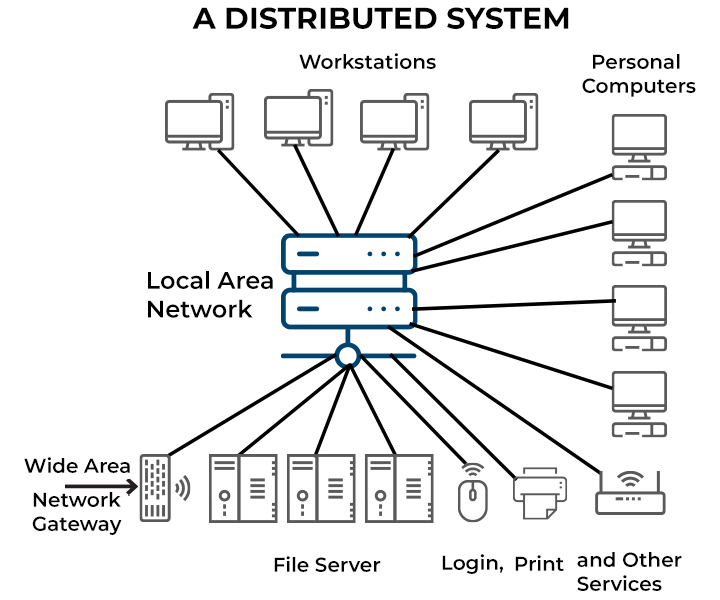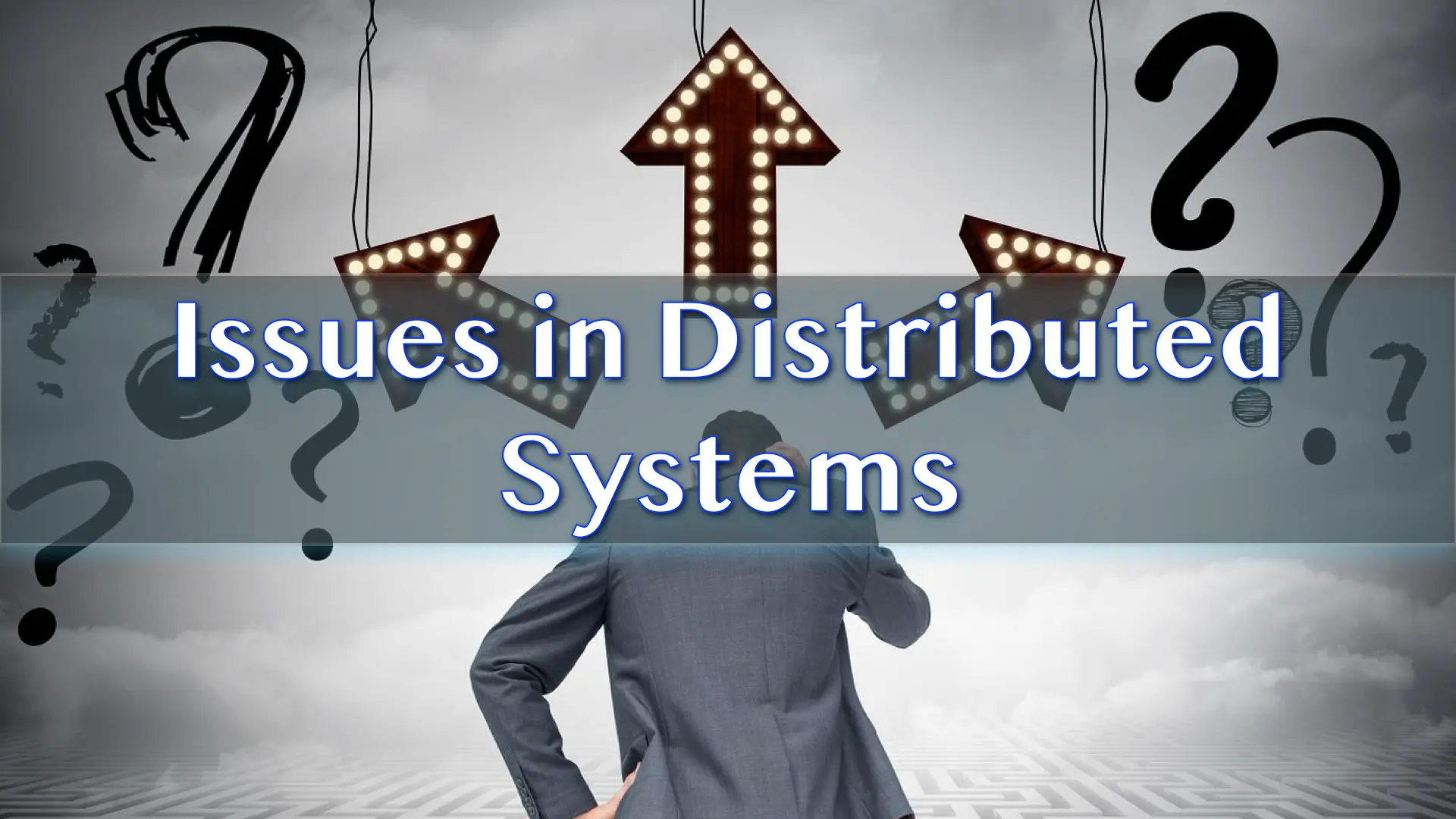In the digital era, the need for faster, more reliable, and scalable computing has grown immensely. Whether you're browsing social media, using a search engine, or watching a video online, you're likely interacting with a distributed system.
Distributed computing is a foundational concept in modern computer science. It enables multiple computers to work together to achieve a common goal, often solving problems that a single machine could not handle efficiently.
This blog post introduces the core concepts of distributed computing and provides an in-depth look at its primary goals.
What is Distributed Computing?
Distributed computing refers to a computing model in which multiple independent computers (often called nodes or hosts) work together to solve a problem or provide a service. These computers are connected via a network and communicate with each other by passing messages.
Each computer in a distributed system has its own local memory and processor, and there is no shared physical memory. The system as a whole appears to users as a single, unified computing resource.

Key Features of Distributed Systems
- Multiple Nodes: A distributed system consists of two or more computers working together.
- Network Communication: Nodes coordinate their actions by exchanging messages over a network.
- No Shared Clock: Nodes operate independently and may not be synchronized.
- Fault Independence: Failure of one node does not necessarily bring down the entire system.
Real-World Examples of Distributed Computing
- Google Search Engine: Google uses thousands of servers distributed across the world to index and search billions of web pages.
- Amazon Web Services (AWS): AWS provides distributed cloud computing infrastructure for storage, processing, and hosting.
- Bitcoin and Blockchain: These use distributed consensus algorithms to validate and record transactions without a central authority.
- Scientific Research Projects: Projects like SETI@home or Folding@home use volunteers’ idle computers to process large datasets.
A distributed system consists of a collection of autonomous computing elements that appear to users as a single coherent system. While this architecture offers scalability, resource sharing, and fault tolerance, it also introduces several challenges due to the physical and logical separation of its components. Below are the primary issues that distributed systems face:
1. Transparency
Transparency refers to hiding the complexity and distribution of the system from users and applications. There are several types of transparency:
- Access Transparency: Users access resources without needing to know their location.
- Location Transparency: Resources appear to be at a single, consistent location.
- Concurrency Transparency: Multiple users can access shared resources without conflicts.
- Replication Transparency: Users are unaware of the replication of resources.
- Failure Transparency: The system continues functioning despite component failures.
- Migration Transparency: Resources can move without user awareness.
Achieving full transparency is challenging, especially in the presence of failures and unpredictable communication delays.
2. Reliability
Reliability ensures that the system continues to operate correctly even in the presence of faults.
- Partial Failures: Some components may fail while others continue to operate.
- Network Problems: Delays, disconnections, and packet losses can occur.
- Uncertainty: It is hard to determine whether a node is down or just slow.
Techniques such as replication, failover mechanisms, and consensus algorithms like Paxos or Raft help improve reliability.
Consensus Algorithm Paxos and Raft
3. Flexibility
Distributed systems must adapt to changes, including hardware configurations, load variations, and network conditions.
- Should support different policies and user requirements.
- Must allow dynamic reconfiguration (adding/removing nodes).
- Should support various operating systems and architectures.
Flexibility must be balanced with consistency and coordination overhead.
4. Performance
Performance is a key consideration but can be hampered by:
- Communication Overhead: Network communication is slower than local memory access.
- Latency: Response time is affected by message delays.
- Load Balancing: Uneven distribution of tasks can bottleneck performance.
Efficient algorithms, caching, and optimized communication protocols help mitigate these issues.
5. Scalability

Scalability is the system’s ability to handle growth gracefully.
- As more nodes/resources are added, performance should not degrade.
- Bottlenecks (e.g., centralized services) should be avoided.
- Algorithms must scale with the number of users and data volume.
Designing for scalability often involves decentralization and partitioning.

6. Heterogeneity
A distributed system often consists of different:
- Hardware Architectures: CPUs, GPUs, embedded devices, etc.
- Operating Systems: Windows, Linux, macOS, etc.
- Networks: Wired, wireless, mobile, etc.
The system should abstract these differences and provide a uniform interface.
7. Security
Security is critical in distributed systems due to open and untrusted communication channels.
- Authentication: Verifying the identity of users and systems.
- Authorization: Controlling access to resources.

- Encryption: Securing data in transit.
- Intrusion Detection: Monitoring and preventing malicious behavior.
Maintaining security while allowing flexibility and transparency is a complex tradeoff.
8. Emulation of Existing Operating Systems
Distributed systems often need to support legacy applications and interfaces.

- Should emulate existing OS behaviors to ensure compatibility.
- Needs to support standard APIs for process, memory, and file management.
- Must hide distribution aspects while maintaining expected behavior. This can introduce performance overhead and design complexity.

Distributed systems offer significant benefits but also face unique and complex challenges. Addressing these issues is essential for building robust, efficient, and user-friendly distributed environments.
Conclusion
Distributed systems are incredibly powerful but inherently complex. The key to managing these systems lies in understanding their limitations, designing for failure, and choosing trade-offs wisely. As the world continues to move toward more distributed architectures, addressing these challenges effectively becomes increasingly critical.
References
Horizontal vs. Vertical Scaling – CloudZero
- Pradeep K. Sinha, Distributed Operating Systems - Concepts and Design
Consensus Algorithm Paxos and Raft
Author: Trishna Tiwari, Siddharth Thikekar, Parvati Pole, Deep Solanki, Mridula Raul, Siddhi Jaiswal, Nishita Sanghavi
Distributed Computing Index Page
Enjoyed? Share this article with your friends.
For updates, news, fun and games follow us on -
Instagram - BuzzWorthy_O
Twitter - BuzzWorthy_O
Threads - BuzzWorthy_O
Facebook - BuzzWorthy Official
Got queries? Feel free to contact us via -
Gmail - buzzworthy.sv@gmail.com
BuzzWorthy - Contact Us Page
-- Buzzzz 🌸🐝 --




